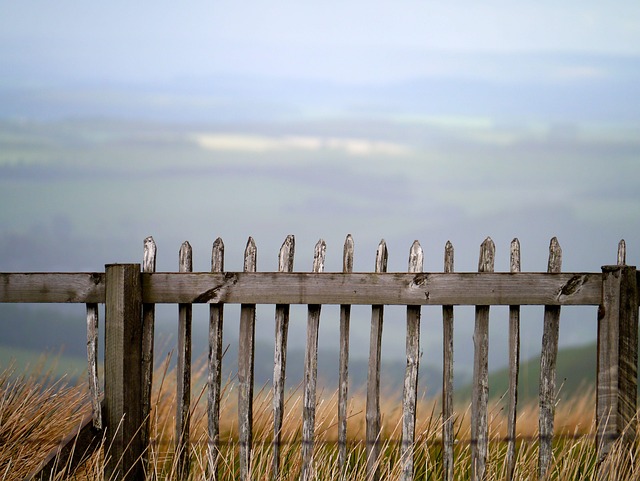In New Bedford, a well-maintained fence is not just an addition to your property but a statement of style and security. This comprehensive guide delves into the essential aspects of fence repair and installation, tailored to the unique needs of New Bedford residents. From understanding local climate’s impact on fencing to choosing durable materials, we’ll navigate the process step-by-step. Learn effective repair techniques for common issues and discover maintenance tips to ensure your new or repaired fence stands the test of time, enhancing both functionality and aesthetics.
- Understanding New Bedford Fence Needs
- Choosing the Right Fence Type
- Installation Process: Step-by-Step Guide
- Repair Techniques for Common Issues
- Maintaining Your New Fence
Understanding New Bedford Fence Needs
Fences are integral to any property, serving both functional and aesthetic purposes. In New Bedford, homeowners often face unique challenges when it comes to fence maintenance due to varying weather conditions and local environmental factors. Understanding these needs is crucial for effective repair and installation services. The region’s climate, with its harsh winters and frequent storms, can take a toll on fences, leading to common issues like rot, damage from snow loading, and rust in metal fixtures.
Additionally, New Bedford’s diverse landscape presents varying terrain and local plant life that can impact fence choices. From coastal areas prone to salt air corrosion to neighborhoods with overhanging tree branches, each property has distinct requirements. Homeowners should consider these factors when deciding on materials, styles, and designs to ensure long-lasting fence solutions that complement their surroundings and provide the desired level of privacy and security.
Choosing the Right Fence Type
When considering fence repair or installation, selecting the appropriate fence type is a pivotal decision. The ideal choice depends on various factors such as your property’s aesthetics, privacy needs, security requirements, and climate conditions. For instance, wood fences offer a classic, natural look but demand regular maintenance to resist rot and pests. Vinyl fencing is low-maintenance, durable, and available in numerous styles, making it versatile for different preferences and budgets. Chain link fences provide robust security and are commonly used in commercial settings or for pets, while iron or metal fences add a touch of elegance and security but might be costlier.
Before making a decision, evaluate your property’s needs and preferences. Consider factors like space constraints, visibility requirements (for example, privacy versus scenic views), and environmental elements. Consulting with professionals can provide valuable insights tailored to your specific circumstances, ensuring you make an informed choice that aligns with both functionality and aesthetics.
Installation Process: Step-by-Step Guide
The installation process for a new fence begins with careful planning and preparation. First, assess your property and decide on the type of fence best suited to your needs—wooden, vinyl, or chain-link, each offering unique advantages. Obtain any necessary permits from local authorities before starting construction. Clear the area of debris and mark out where the fence will be installed using stakes and string for a straight line. Dig post holes at the designated locations, ensuring they are deep enough to support the fence’s weight. Place concrete in the holes to secure the posts firmly in place, allowing it to set completely.
Next, attach the fence panels or sections to the posts using appropriate hardware like brackets or nails. Start from one end and work your way along the line, ensuring each panel is level and securely fastened. For additional support, consider adding corner braces between posts. Once all panels are in place, check for any gaps or misalignments and make adjustments as needed. Finally, finish off with a coat of paint or sealant to protect the fence from the elements and enhance its longevity.
Repair Techniques for Common Issues
When it comes to fence repair, identifying and addressing common issues is key. One of the most frequent problems is loose or damaged posts, which can often be stabilized or replaced entirely. New Bedford Fence experts use various techniques, including setting new posts, reinforcing existing ones with hydraulic jacking, or using structural supports to secure the fence line.
Another typical issue is rotted or broken rails, especially in older fences. Repairs involve either replacing the damaged sections with new rail material or using specialized brackets and connectors to strengthen the existing rails, ensuring a sturdy and safe barrier once again.
Maintaining Your New Fence
After installing or repairing your new fence, proper maintenance is key to ensuring its longevity and keeping it looking its best. Regular cleaning and inspection are essential parts of this process. Start by removing any debris, leaves, or branches that may accumulate on top of or around the fence. Use a soft brush or cloth to gently clean the surface, especially if your fence has a decorative finish or intricate design. Avoid using harsh chemicals or power washers, as they can damage the fence over time.
Additionally, inspect your fence for any signs of wear and tear, such as loose posts, broken rails, or damaged boards. Address these issues promptly to prevent further deterioration. Keep an eye out for common problems like rot, especially in wooden fences, and treat them with appropriate preservatives or replacements to maintain structural integrity. Regular maintenance will not only keep your fence looking neat and tidy but also ensure it provides the security and privacy you desire for years to come.
